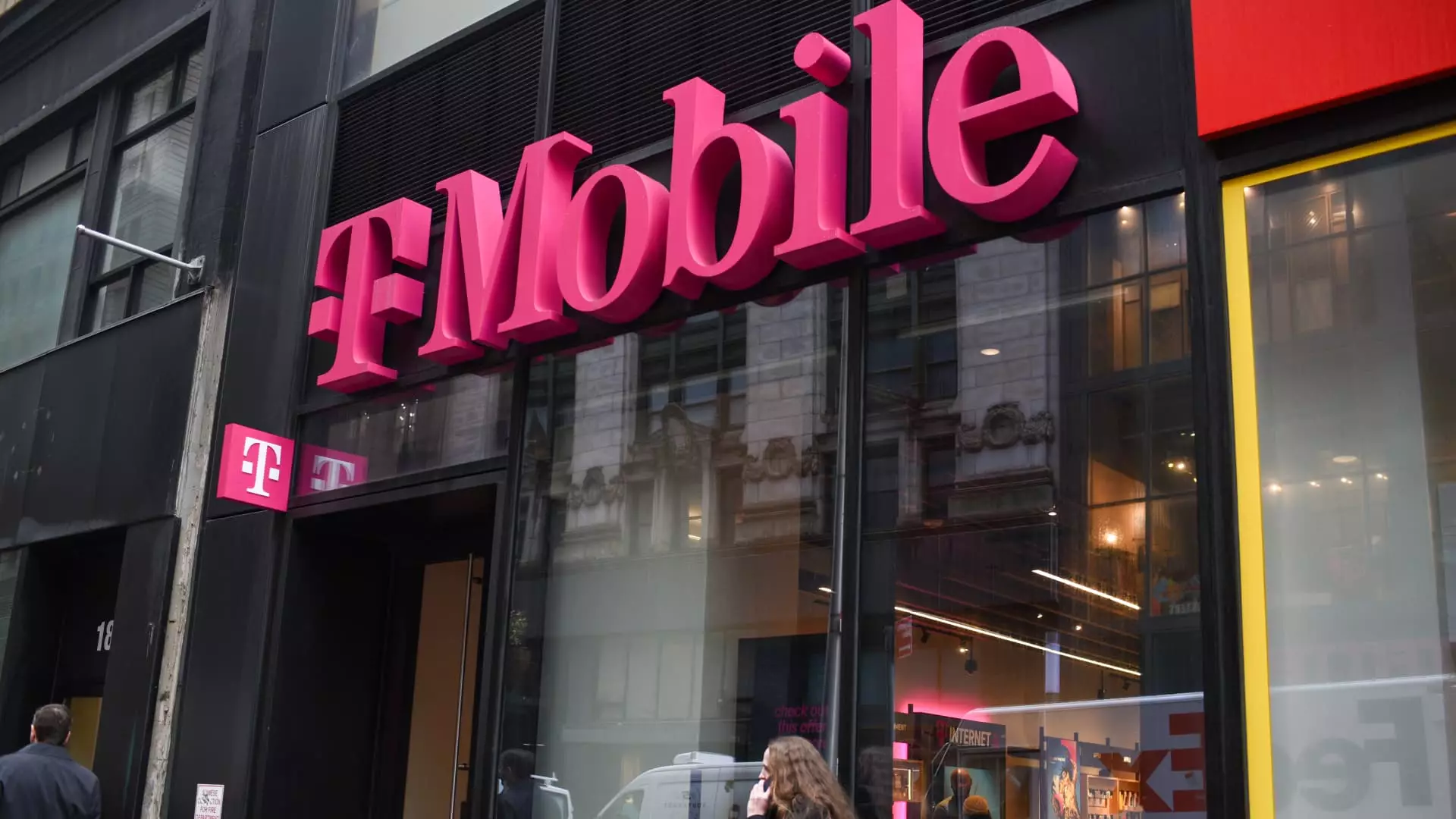The stock market is a living organism, constantly pulsating with shifts in sentiment and performance. On any given day, the difference between euphoria and despair can hinge on a single earnings report. Today’s midday trading serves as a quintessential reminder of how rapidly fortunes can change. While we might be tempted to view these movements as mere fluctuations, they reveal much deeper layers of economic sentiment and investor psychology.
This week, T-Mobile faced a sharp drop of 11% after disappointing news regarding its postpaid phone subscriber growth. The company added just 495,000 new subscribers, a number that narrowly missed the analyst forecast of 504,000. The miscalculation may seem trivial, but in the world of stocks, even a small miss can lead to panic selling or even a drastic devaluation of a brand that previously promised growth. This mirrors wider fears about competition in the telecom sector, stressing that a safe haven may not exist in an industry facing disruptive innovations.
Contrasting Fortunes: Alphabet’s Success Story
Conversely, Alphabet—Google’s parent company—gave investors reason to cheer with its impressive first-quarter results. The company reported earnings per share of $2.81 on a revenue of $90.23 billion, both figures significantly outpacing expectations. Analysts had forecasted just $2.01 per share and $89.12 billion in revenue. The contrast between T-Mobile’s performance and Alphabet’s highlights a critical truth: dependable revenue streams and diversified services can buffer companies against volatility. As technology continues to dictate market trends, we should remain cautious of investing in sectors where growth is reliant on finite products or services.
The Shafts of Skechers and Gilead Sciences
In stark juxtaposition to Alphabet’s success, Skechers and Gilead Sciences represent alarm bells in today’s market. Skechers experienced a worrying 4.8% drop following subpar revenue figures. The footwear titan temporarily withdrew its 2025 guidance, citing “macroeconomic uncertainty stemming from global trade policies.” This cautious stance raises questions about the broader supply chain issues that continue to plague manufacturers. With consumer behavior rapidly shifting due to inflation and economic instability, one must consider which brands have the agility to adapt.
Meanwhile, Gilead Sciences saw a decrease of 2.5% as its first-quarter revenue reached $6.67 billion—falling short of the anticipated $6.81 billion. This absent growth should prompt investors to not just analyze single-quarter performances but to look deeper into the sustainability of a company’s offerings. While Gilead reported earnings that surpassed expectations, the underlying numbers reveal a company that risks stagnation if it fails to innovate effectively.
Transport and Chips: A Rocky Road Ahead
In transport news, Saia’s stock plummeted by 31%, an astonishing decrease that reflects significant operational deficiencies. What was once a rising star in the shipping industry is now facing scrutiny and downgrades for its dismal guidance. This upheaval should serve as a testament to the severe challenges all companies face in balancing operational efficiency and growth. Understanding the specifics of why these companies are faltering is as crucial as knowing their surface performance metrics.
Intel also experienced discomfort, as shares dipped by 7% over failing to meet current-quarter forecasts. The tech giant’s upward mobility seems stunted, with a mid-quarter revenue forecast of $11.8 billion falling short of $12.82 billion anticipated by analysts. This mishap serves as a cautionary tale not just for Intel but for the entirety of tech investors: adaptability in fast-moving sectors can no longer be optional, but a requirement for survival.
The Denver Rise of Boston Beer and the Drive of Tesla
Some companies do still ascend the ranks; Boston Beer saw a promising uptick after exceeding EPS expectations. Although they caution that tariffs could threaten future earnings, the company’s present success indicates that adaptability, strategic foresight, and a diverse portfolio can yield positive outcomes even in harsh climates.
Tesla’s meteoric rise of 10% today further exemplifies the electric vehicle market’s continuing resilience. As investors gradually digest April’s steep sell-offs, Tesla is feeling the benefits of renewed confidence in its leadership and innovation. The heavy investments in technology and infrastructure place Tesla in a prime position to weather market uncertainties.
Today’s market movements not only depict individual company performances but offer a fascinating panorama of the broader economic landscape. As we navigate through these tumultuous times, the key takeaway is that adaptability, innovation, and foresight remain paramount in securing long-term stability and success.

